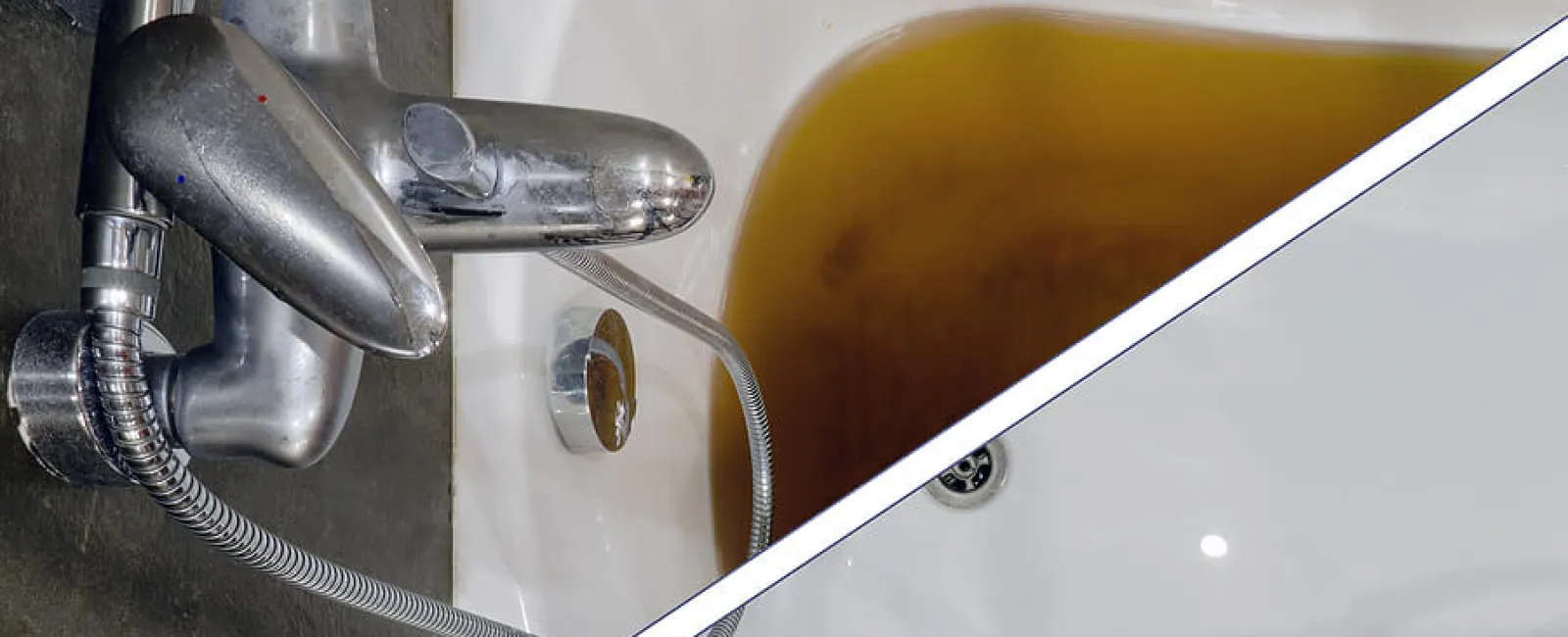What are your concepts on Water Coming up Bathtub Drain?

Sewage back-up in the tub can be a distressing and unhygienic problem for any type of house owner. Not only is it troublesome, however it likewise poses significant health threats and indicates underlying problems with the plumbing system. Understanding why sewage is turning up via the bathtub is critical for taking suitable activity to resolve the problem efficiently.
Introduction to the Problem
Usual Factors for Sewage Back-up
Blockages in the Sewage System Line
Among one of the most common reasons for sewage backup is an obstruction in the sewage system line. This can happen because of the build-up of particles, grease, or foreign objects in the pipes, avoiding proper flow and causing sewer to support into your bathtub.
Tree Origin Breach
Tree origins looking for wetness and nutrients can infiltrate sewer lines through tiny splits or joints. Gradually, these roots can expand and increase, creating considerable damage to the pipes and causing sewage back-up problems.
Understanding the Problem
When sewer starts backing up right into the tub, it's a clear indicator of a problem with the drain system. The wastewater that needs to be streaming far from your home is rather discovering its back into your home, which can lead to substantial damages and health hazards.
Possible Causes
A number of elements can contribute to sewer back-up in the bathtub. From obstructions in the sewage system line to concerns with the plumbing infrastructure, determining the root cause is necessary for locating a solution.
Aging Infrastructure
Older homes may have outdated plumbing systems that are much more susceptible to corrosion, cracks, and wear and tear. As pipes age, they become more prone to leakages and obstructions, increasing the chance of sewer backup events.
Heavy Rainfall or Flooding
During periods of heavy rainfall or flooding, the drain system might come to be overloaded with excess water, triggering backups and overflows. This can result in sewer backing up into bathtubs and various other fixtures inside the home.
Signs of Sewer Back-up
Foul Odors
Unpleasant smells emanating from drains pipes or fixtures, specifically in the washroom, may show sewage back-up issues. These odors are often strong and relentless, signifying an issue that calls for immediate focus.
Slow Draining Fixtures
Bathtubs, sinks, and toilets that drain gradually or not at all could be experiencing sewer backup. If multiple components are influenced simultaneously, it's likely that the problem originates from a common point, such as the primary sewer line.
Gurgling Noises
Unusual gurgling or bubbling noises coming from drains when water is running elsewhere in the house are indicative of air caught in the plumbing system. This air accumulation can result from sewage back-up and need to be explored without delay.
Wellness Risks Related To Sewer Backup
Contamination of Water Supply
Sewer back-up can contaminate the water supply in your home, presenting a major health danger to you and your family. Direct exposure to infected water can lead to stomach issues, skin infections, and other diseases.
Mold Development
Moisture from sewer backup can create ideal problems for mold growth in your house. Mold spores can worsen respiratory troubles and create allergic reactions in sensitive individuals, making punctual cleaning vital.
Spread of Condition
Sewer contains damaging germs, infections, and bloodsuckers that can cause a range of diseases, including hepatitis, cholera, and gastroenteritis. Coming into contact with sewage or infected surface areas places you in jeopardy of infection.
Tidying up After Sewer Back-up
Disinfection Procedures
Completely sanitize and sterilize affected locations after sewage backup to get rid of damaging bacteria and prevent mold and mildew growth. Use ideal cleaning products and safety gear to ensure safe and reliable cleaning.
Remediation of Influenced Areas
Fix any type of damages to flooring, walls, or components caused by sewer back-up. Depending upon the level of the damage, you might need to change carpeting, drywall, or various other materials to recover your home to its pre-loss condition.
Immediate Actions to Take
Switching Off Water System
In the event of sewage back-up, it's necessary to turn off the water system to prevent additional contamination and damages. Locate the primary water shutoff valve in your house and shut it off up until the problem can be solved.
Contacting a Specialist Plumber
Handling sewer backup is not a do it yourself task. Get in touch with an accredited plumber with experience in taking care of sewage-related concerns to examine the scenario and execute essential repair services or cleanings.
Staying Clear Of Contact with Polluted Water
Until the sewer back-up is settled, stay clear of contact with polluted water to prevent the spread of bacteria and virus. Use protective equipment if you must remain in the damaged area and clean your hands completely afterward.
Preventive Measures
Normal Maintenance of Sewer Lines
Schedule normal assessments and maintenance of your sewer lines to recognize and resolve possible concerns before they escalate into significant issues. This can consist of clearing out debris, evaluating for tree root breach, and fixing any type of broken pipelines.
Mounting Backwater Shutoffs
Think about mounting backwater valves in your plumbing system to avoid sewage from flowing back right into your home during periods of heavy rainfall or flooding. These shutoffs immediately close when water draws back up, safeguarding your residential or commercial property from contamination.
Proper Disposal of House Waste
Prevent flushing anything besides toilet tissue and human waste down the toilet to avoid clogs and blockages in the sewer line. Dispose of oil, oil, and various other home chemicals properly to decrease the danger of plumbing problems.
Why Is Water Backing Up in My Bathtub When I Flush My Toilet?
What to do about a sewer line clog
First, don’t bother with plunging. No amount of plunging will dislodge the clog in a sewer line. The clog is too far away. Plungers are for clogs in the toilet itself, not the sewer line. Plus, the most likely causes of a sewer clog are:
Tree roots Flushed toys or feminine products Grease buildup Those items don’t move easily. And in the case of tree roots, the roots need to be cut out of the pipe and the pipe will need to be repaired.
You’ll need a closet auger. A closet auger is a type of plumber’s snake with a protective cover to keep from scratching the delicate porcelain toilet. If the clog is further down, you may need to remove the toilet or use one of your cleanouts to get to the clog.
We also recommend doing a video inspection of the drain to ensure that the cause of the clog has been completely removed. Otherwise, you could have the same problem again in a few days or weeks.
https://mspplumbingheatingair.com/blog/why-is-water-backing-up-in-my-bathtub-when-i-flush-my-toilet

We hope you enjoyed our topic on Why is There Sewage Coming Up Through the Bathtub. Thanks a lot for taking time to browse our piece. Sharing is caring. You never know, you might be helping someone out. Many thanks for your time invested reading it.
Book Appointment